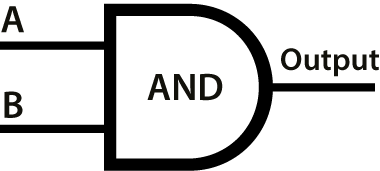DARPA Wait, What? |
http://txtlbio.org/waitwhat |
What Are DNA Circuits?
DNA circuits consist of collections of biological molecules that interact with each other to carry out a desired function. Biological circuits in nature are responsible for the amazing repertoire of behaviors that we see in the world around us.
A DNA switch is a circuit that makes a decision based on a pattern of external inputs. For example, a cell may need to turn on a certain stress response when it is exposed to certain environmental conditions. Cells have circuitry for detecting changes in ambient temperature, presence of toxins and many other conditions. If the switch is activated, then it can turn on gene expression of components that react to the environmental condition.
This demonstration will allow you to build different types of two-input switches by combining different parts of DNA.
Switches  |
Two representations of DNA switches are shown in the figure to the right. The top switch implements an "AND" behavior, in which the switch only activates if two input conditions are both present at the same time. The lower switch implements an "OR" behavior, in which the switch is activated if either input is present.
Parts   |
The switches can be implemented using DNA components ("parts") that encode the various genes and control circuitry, represented in the figure on the right. The components that we use are based on DNA sequences obtained from natural organisms, which we are putting together in novel ways to implement a switch.
In this demo, we have created a set of components that allows us to design a programmable switch whose input conditions you determine. This allows us to build an artificial switch, encoded in DNA, which turns on only in specific conditions.
You can submit a design and we will implement and test it here at “Wait, What?”, using TX-TL technology.